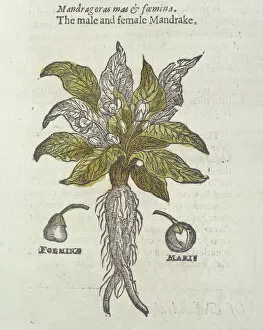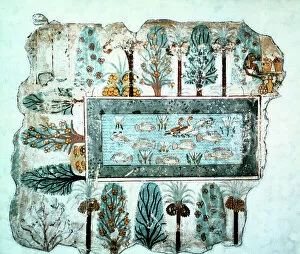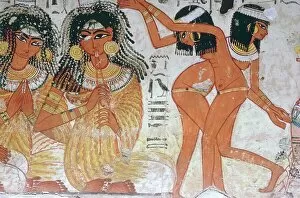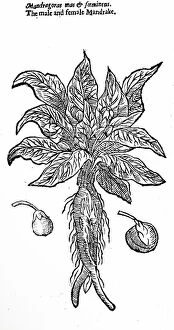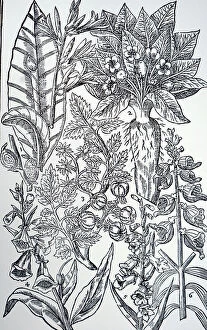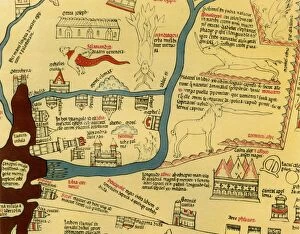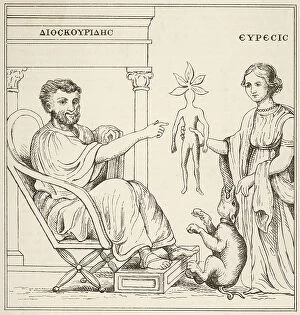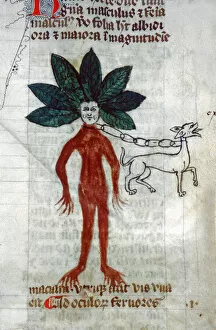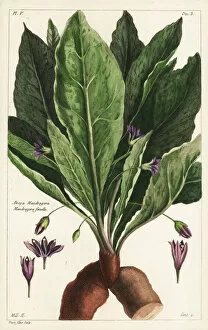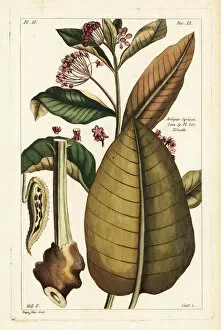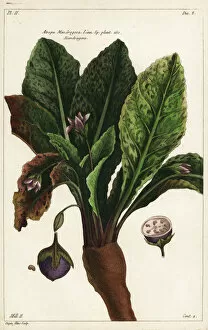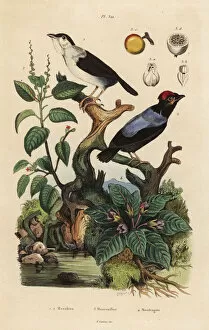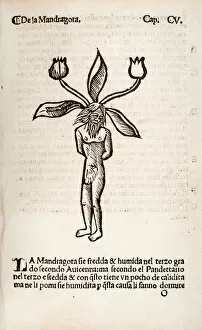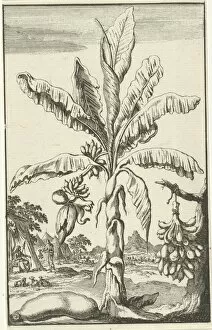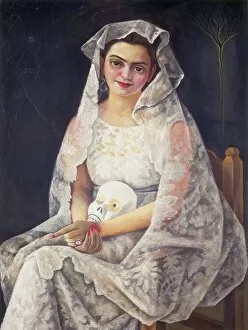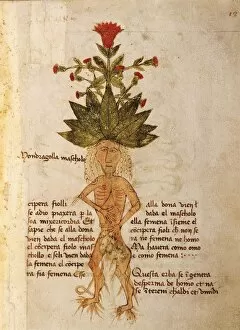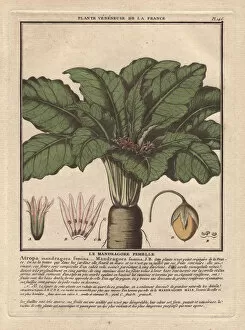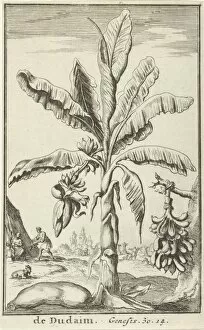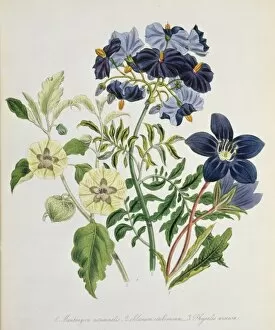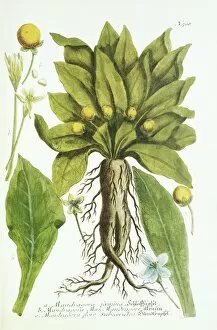Mandragora Collection
Mandragora, also known as mandrake, is a fascinating plant that has captivated human imagination for centuries
For sale as Licensed Images
Choose your image, Select your licence and Download the media
Mandragora, also known as mandrake, is a fascinating plant that has captivated human imagination for centuries. Its roots are believed to resemble the shape of a human figure, and it has been associated with various myths and legends throughout history. One of the earliest depictions can be found in a fragment of wall painting from the tomb of Nebamun in Thebes, Egypt. Dating back to the 18th Dynasty around 1350 BC, this artwork showcases the significance of mandrake in ancient Egyptian culture. The herb's importance is further highlighted by another fragment of wall painting from an Egyptian garden pool during the same period. It reveals how mandragora was cultivated and cherished for its mystical properties. Dioscorides Mandrake Plants Mandragora Circa provides us with valuable insights into how this plant was documented by renowned Greek physician Dioscorides. His writings on medicinal plants have greatly influenced herbal medicine practices throughout history. Even cartographers recognized the significance of mandrake as seen in Hereford World Map created by Richard de Bello circa 1280. This map includes illustrations depicting various plants including mandragora, showcasing its widespread recognition at that time. Artists like Diego Rivera were also inspired by this enchanting plant. In his painting "Lady in White, " he incorporates imagery related to mandrake, symbolizing its mythical allure and connection to femininity. The white-flowered variety of Atropa mandragora adds another layer to our understanding of this intriguing plant species. Its unique appearance sets it apart from other varieties and contributes to its mystique. Engravings from different eras such as "Mandragora plant" (18th century) and "Le Vocabulaire Illustre: Mandragore; Mandrake" provide visual representations that have helped spread knowledge about this captivating herb over time.

